If it is legal and allowed, what is the thing you will take from a filament factory? What is the most important thing? How is every filament been made? What happened before a filament been received by the customer? Well, let’s talk about the secrets behind all of these questions.
So, the TCT, Shanghai, 2024 just ended, usually some visitors may take their time to visit 3D printer manufacturers in Hangzhou or Shenzhen, a lot of interesting details might be seen then. 3D printers, the little machine is connecting the world and now people who behinds the machine was been seen in real life. They might see what we mentioned in That’s how we make every KINGROON 3D Printer happens in every factory. So, they know more about their machines. But another they don’t want to miss is to visit a filament factory. As a guy who 3D prints over 4 years, used hundreds of filaments and printed thousands of objects, it even makes me amazed.
Filament factory – A magic place for every 3D printer enthusiast
Dongguan, a city who is near to Shenzhen, there is one of the KINGROON’s filament factory. PLA, PLA+, PETG, TPU, with single color are mostly from here.
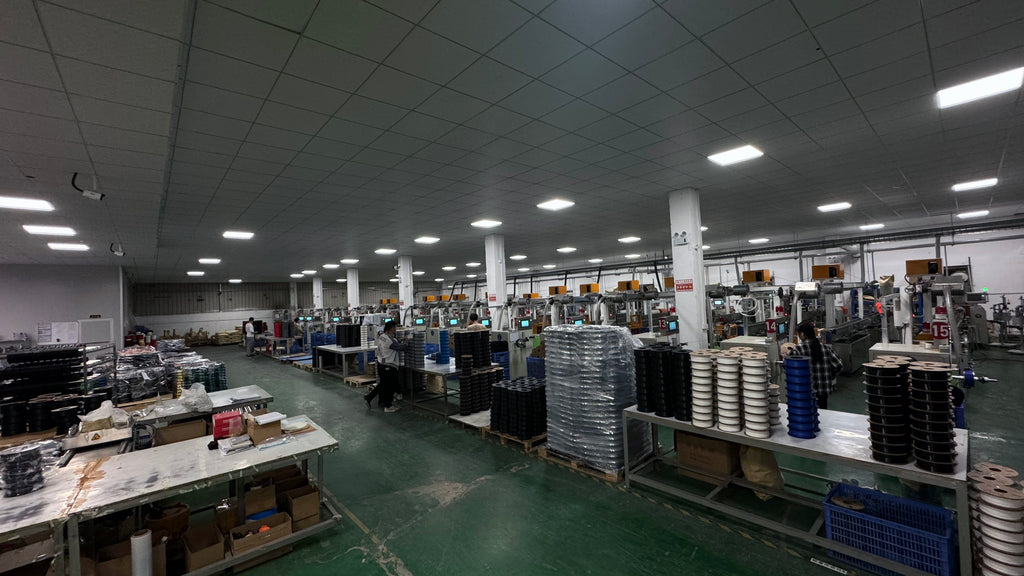
(3D Printing Filament Workshop of KINGROON)
Every workshop is divided to different areas, material, warehouse, production, sorting, labeling, packaging, shipping, and top-secret area not allow to enter.
The filament machines take most of the room, they all look identical and works for day and night. Due to the rapid developing of 3D printing industry, 3D printing filaments supply becomes tight for every manufacture. It does make sense, Klipper make 3D printing faster and the developing makes 3D printers easy and affordable for everyone.
Filament production – Secrets Behind the Creative Materials
Once you search filament on Amazon or AliExpress, you will see filaments with different prices, different types and different brands, what’s makes them different? Well formula is the answer.
Back to the first question, the best thing you should take is the formula, because that is the most important thing for every filament factory. Formula leads to different material features, quality and performance.
Alright, what does the formula mean? Generally speaking, it’s material combinations, and some processing may also involve.
1.Raw Material
Taking the most common material, PLA as the example, factories may start from the same raw materials, pure PLA or PLA with special additives. They usually called it “raw material”.

(Raw material or PLA 3D printing filament)
They mixed materials all together with formula, then the machine makes the mixtures into filaments. For basic white PLA, raw material is all you need.
2.Color Material
For filament with colors, “color material” is required, it is powder with color. Sometimes, we mixed that power with the raw materials.

(Color material: a powder to color raw material)
For example, we mix raw material with black color material(powder) to get Gray PLA.
3.Seed Material
Seed material looks like PLA in pieces, they are small pieces with color. We can also consider them as colored raw materials. Compare to powder, it is better for storage, combination, and processing.

(Seed material: Combination unit for 3D printing material production)
The seed material also makes filament production become more faster, because the material supplier makes seed material directly.
For single color filaments, all you need is the seed material.

(Red PLA: Seed material in red)
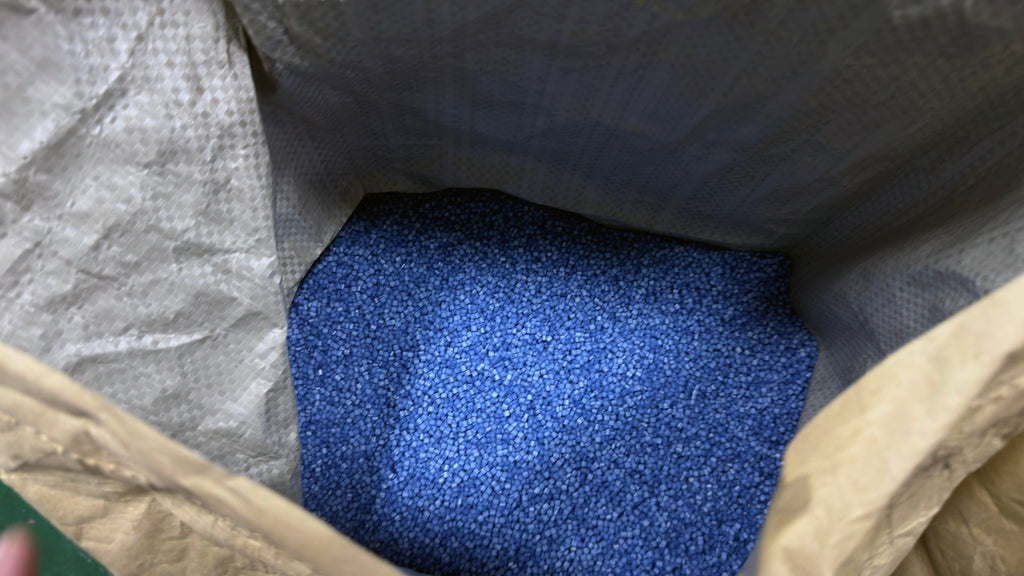
(Blue PLA: Seed material in blue)
For those color who needs to get from mixing, seed materials are also easy for processing.
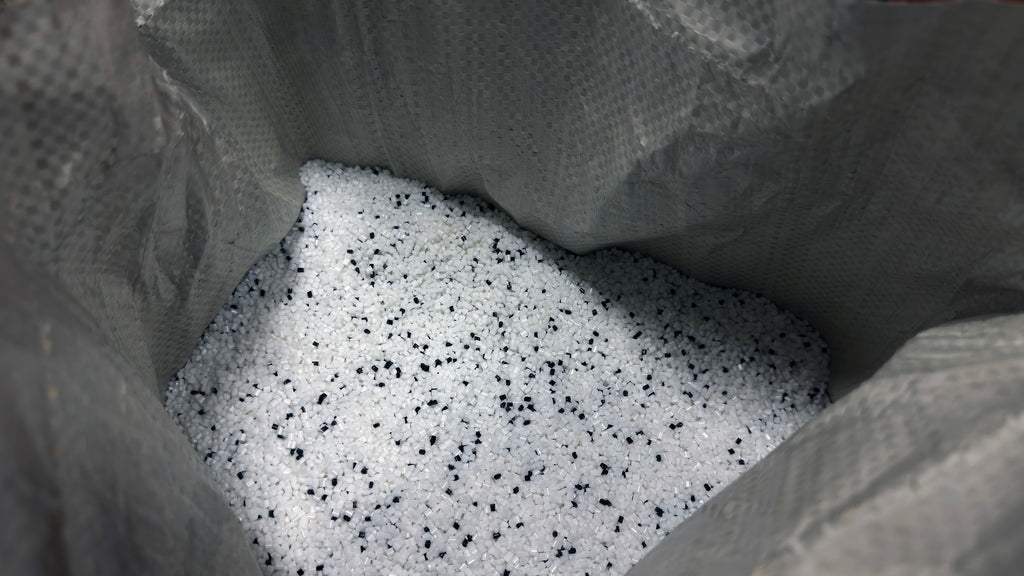
(Gray PLA: Seed material in Gray)
As far as I know, color material and seed material are used both in our filament production. I didn’t ask for why, but I guess the formula has something to do with it.
4.Material processing
Once the material gets prepared, it will be taken to the filament machine, then poured into the huge funnel at the end of it. The bag will not be taken away, until the material is running out.
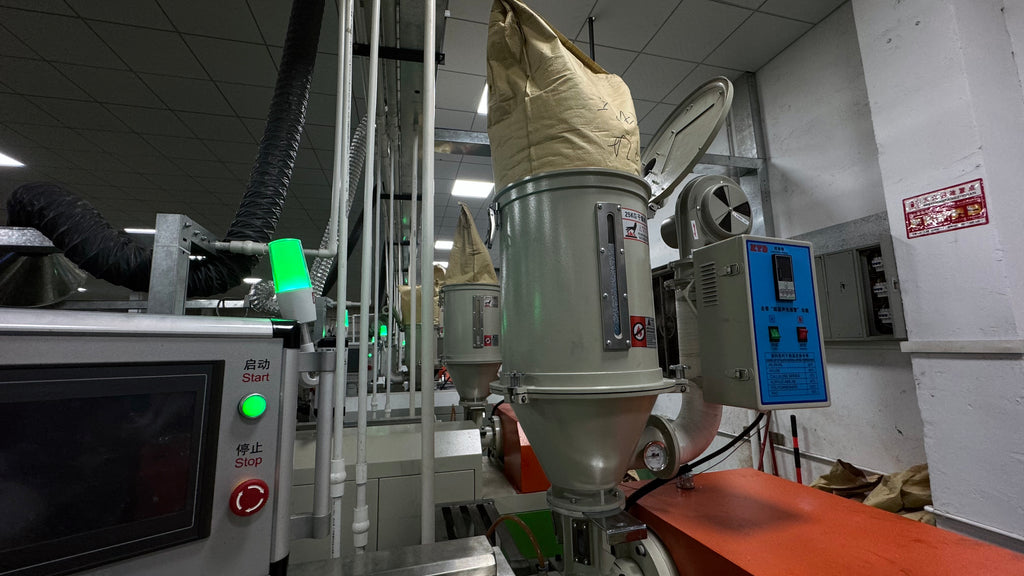
(The Filament materials is processing)
After that, the material goes down with the gravity, getting mixed and melted by the machine. There is a huge bucket under the funnel, we can see materials from its side windows. It is empty on the top, so the bucket must be closed to the funnel before the next refill. And we can see the bucket is actually a dryer.
I don’t know why, but there is not heat at all by standing next to the machine. I guess the machines we use may have a better process.
5.Filament Watering
After that, everything is automatically and fast. A few steps forward, there is a long flume with water-like liquid to the end, the new filament is inside that liquid and dragging forward to the other side. If my guess is not wrong, it is the second process.
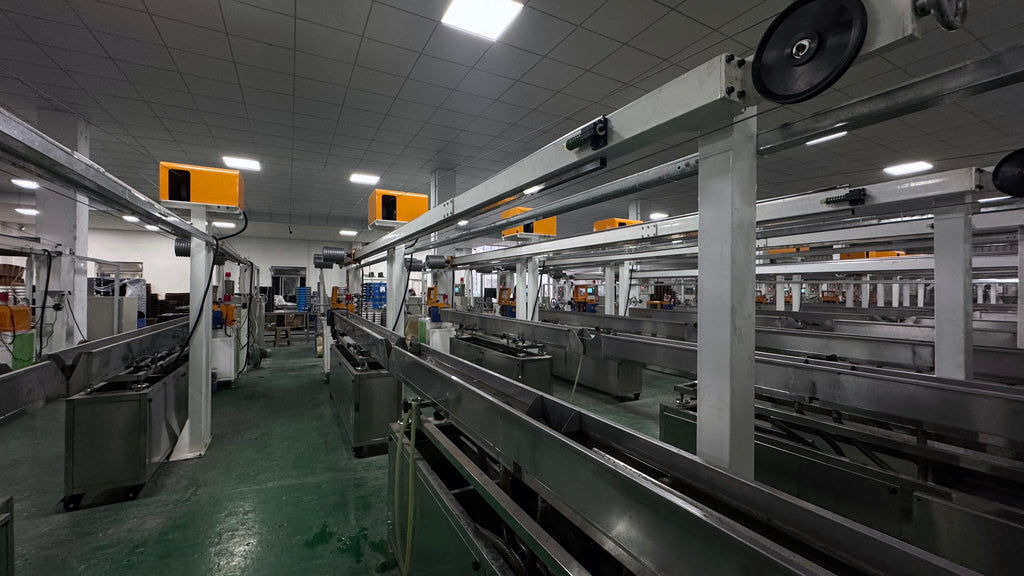
(The a long flume of the filament machine is watering the filament )
Where does the filament go? Well, if you look upwards, it is dragging to the top, and the wheels spins faster to guide it.
6.Filament Rolling
I follow the filament to go to the other side. The liquid is clean and flowing in the long flume, it is warping the filament. Then I see a few wheels are dragging the filament out. Before it, there is a scanner with alarms, shows the filament diameter dynamically. If the diameter is too far from 1.75mm, the alarm will ring loudly.
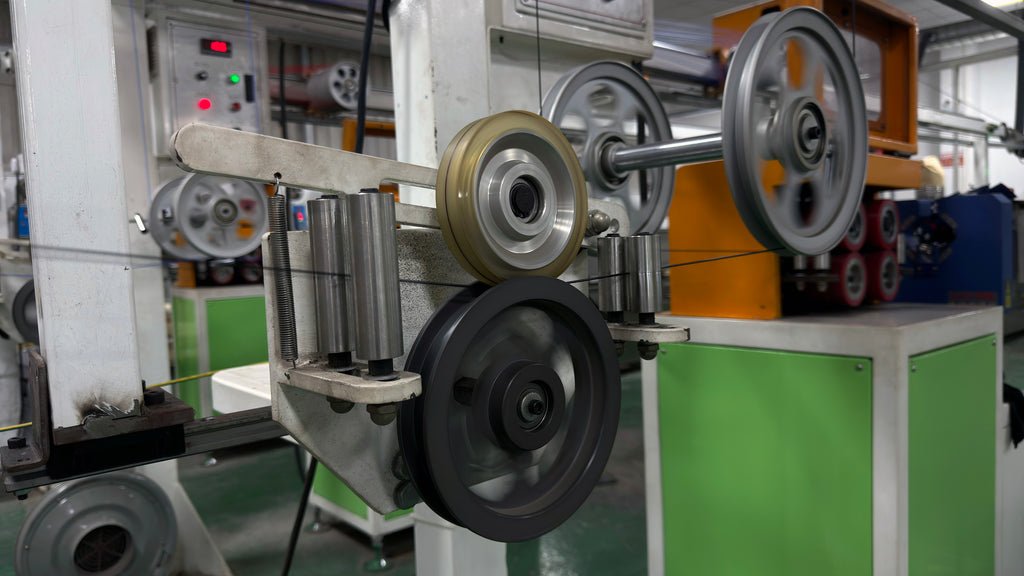
(Filament is dragging by three wheels)
So, the qualified filament will be continue dragged by the wheels before it. They spin really fast and dragging the filament to the top. There is some more process after that.
7.Spools Rolling
Once all the process finished, the filament will be dragged to the end of the machine. Workers open the last wheel, put an empty spool on its axis, close the wheel, then the filament rolls on fast. No stop between spools.

(Filament spool is rolling)
Thanks to the guider, the filament rolling is not random, it guides the filament left and right. That’s how you get tidy filaments. We all know untidy filaments may cause you trouble.
8.Filament labeled
Once a spool finished and qualified, the filament will start to alarm, so the workers will start a new spool right after it. The next process is to have them labeled. The filament will be sent to another area to get labeled.

(KINGROON Filaments are getting labeled)
For KINGROON users, the spool sticker and filament label must look so familiar. That’s where it started.
9.Filament Packaging
Once the filaments labeled, they will be sent to be sealed in the vacuum bag. You can’t do that without a powerful vacuum machine. But I didn’t see it this time.

(Filaments packaged in box)
Stepping to the warehouse, I see the vacuumed filaments are already packaged with the box. They are wafting for the next process. Sometimes we package the filament box with black bag and labeled again. And for some variant, for example mixed color PLA, we have to define all the colors and put them in the ten-pcs box.
10.Filament Shipping
After that, the filaments will be packaged with the ten-pcs box, put on the pallet, then warped by film.

(Filament are ready to ship)
Next, it will be sent to the trunk, taken to the port. Then take a few months on the sea, loaded on the destined port, then waiting for your makers in our warehouse.




Thank you for showing off your factory process. I have been using your filament for a while it is very nice print well I will be buying more in the future.